Navigating Bolt Pattern Adapters in Vehicles
September 26, 2023
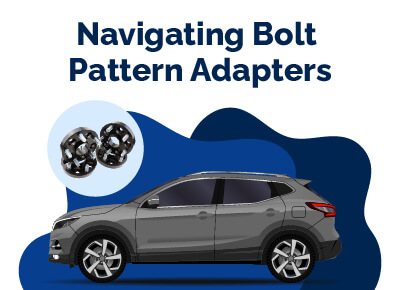

Michael Collado is a car buying expert and has been a professional automotive writer since 2009. He’s written about dealership sales, vehicle reviews and comparisons, and service and maintenance for over 100 national automotive dealerships. Previously, Collado was a copywriter at the ad agency TBWA/Chiat/Day where he worked on brand campaigns for Nissan, ABC Television, Sony PlayStation, and Energizer. His recognition in the ad industry includes awards from Communication Arts and The Clios.
Collado has a Bachelor’s degree from the University of South Florida, with a major in Psychology and a minor in Marketing.
Learn How To Customize Your Vehicle’s Tires and Wheels to Make It Truly Your Own
To get the most out of your vehicle, you may want to change your wheels and tires.
Whether you want a better-looking vehicle or a better handling driving experience understanding bolt pattern adapters is essential.
We will help you better understand bolt pattern adapters, discussing their significance, usage, and considerations to help you make informed decisions about your vehicle customization.
Table of Contents
- The Basics of Bolt Patterns
- Understanding Bolt Pattern Adapters
- When and Why Are Bolt Pattern Adapters Used
- Conversion Between Metric and Standard Bolt Patterns
- Choosing the Right Bolt Pattern Adapter
- Installation and Safety Considerations
- Benefits and Limitations
- Best Car Deals by Category
- Frequently Asked Questions
The Basics of Bolt Patterns
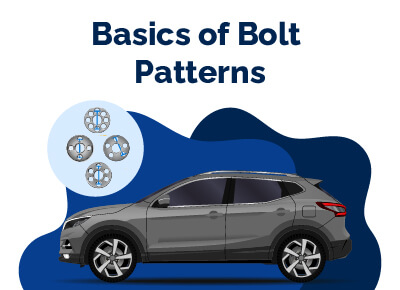 Definition of Bolt Pattern and Its Significance
Definition of Bolt Pattern and Its Significance
Before we get into the nitty gritty on bolt pattern adapters, let’s talk about what bolt patterns are and why they matter.
A bolt pattern refers to the arrangement of bolts or studs on your vehicle's wheel hub, designed to precisely fit a specific wheel. This pattern dictates the number of bolts, their placement, and the diameter of the circle they form. Bolt patterns are crucial for ensuring the proper fitment of wheels and tires on your vehicle.
Basics of Bolt Pattern Measurement: PCD (Pitch Circle Diameter)
First, let’s take a look at something called the Pitch Circle Diameter (PCD). PCD is the distance between the centers of two adjacent bolt holes on your wheel.
This value is expressed in millimeters and determines which wheels are compatible with your vehicle. Common PCD measurements include 4x100, 5x114.3, and 6x139.7, each denoting the number of bolts and the PCD in millimeters.
Common Bolt Pattern Sizes and Variations
Bolt patterns are not one-size-fits-all; they vary across vehicle makes and models.
Some common bolt patterns include 4x100 (compact cars), 5x114.3 (common for many vehicles), and 6x139.7 (common for trucks and SUVs). The specifics of your vehicle's bolt pattern can usually be found in the owner's manual or by consulting the manufacturer.
Understanding Bolt Pattern Adapters
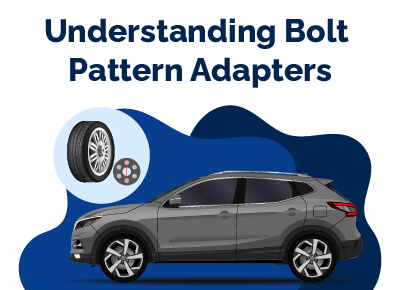 Introduction to Bolt Pattern Adapters and Their Purpose
Introduction to Bolt Pattern Adapters and Their Purpose
Bolt pattern adapters are designed to address compatibility issues between your vehicle's hub and your desired wheels. They allow you to fit wheels with different bolt patterns onto your vehicle.
These adapters come in various sizes and configurations, making them versatile tools for customizing your vehicle's appearance and performance.
Adapting Different Bolt Patterns: Changes in Fitment and Offset
The primary function of bolt pattern adapters is to bridge the gap between your vehicle's existing bolt pattern and the one required by your new wheels. This often involves changing the number of bolt holes on the adapter to match your wheels while maintaining the original pattern for your hub.
Additionally, adapters can influence wheel offset, which refers to the distance between the wheel's mounting surface and its centerline. Understanding these changes is crucial for achieving the desired fitment and appearance.
When and Why Are Bolt Pattern Adapters Used
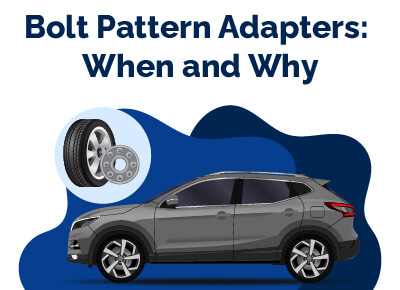 There are a number of reasons why bolt pattern adapters are widely used. Here are some of the most common uses.
There are a number of reasons why bolt pattern adapters are widely used. Here are some of the most common uses.
1. Custom Wheel Fitment: Matching Different Wheel Bolt Patterns
One common use of bolt pattern adapters is to install aftermarket wheels that have bolt patterns incompatible with your vehicle. This is particularly prevalent in the automotive enthusiast community, where individuals seek unique and eye-catching wheel designs.
Bolt pattern adapters make it possible to explore a wider range of wheel options without being limited by your vehicle's stock bolt pattern.
2. Vehicle Customization: Adjusting Bolt Patterns for Unique Designs
Vehicle customization often involves pushing the boundaries of design and performance. Bolt pattern adapters are invaluable in such endeavors, allowing you to create one-of-a-kind looks and optimize your vehicle's handling characteristics.
Whether you're building a show car or enhancing your off-road capabilities, these adapters offer flexibility and creative freedom.
Conversion Between Metric and Standard Bolt Patterns
In some cases, you might need to convert between metric and standard bolt patterns.
Bolt pattern adapters can facilitate this transition seamlessly, ensuring compatibility between wheels and hubs with different measurement systems. This versatility is particularly helpful when sourcing wheels from international markets.
Choosing the Right Bolt Pattern Adapter
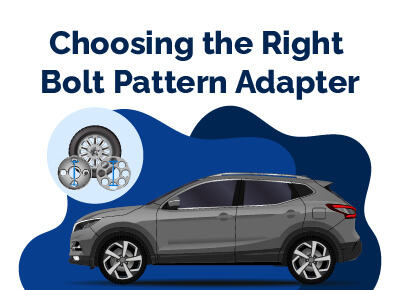 Factors to Consider: Material, Thickness, and Compatibility
Factors to Consider: Material, Thickness, and Compatibility
Selecting the right bolt pattern adapter requires careful consideration of several factors.
First, the material matters. High-quality adapters are typically made from strong and durable materials like billet aluminum or steel.
The thickness of the adapter is another critical factor, as it affects the overall offset and fitment. Thicker adapters can cause the wheels to protrude further from the vehicle, potentially impacting handling and appearance.
Compatibility is paramount. Ensure that the adapter you choose matches both your vehicle's hub and your desired wheels. Pay attention to the PCD measurements and the number of bolt holes. Also, confirm that the adapter provides the necessary clearance for brake components.
Measuring Offset Changes and Potential Effects on Vehicle Performance
As mentioned earlier, bolt pattern adapters can alter the offset of your wheels. It's essential to calculate these changes accurately to maintain optimal handling and appearance.
Deviating significantly from the manufacturer's recommended offset can affect steering stability and lead to uneven tire wear. Consider consulting a professional or using online offset calculators to determine the ideal offset for your setup.
Installation and Safety Considerations
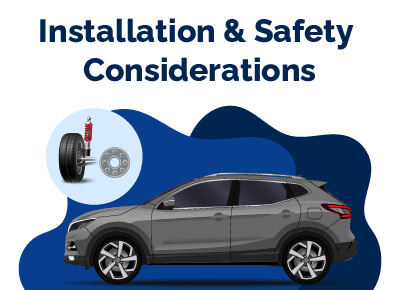 Proper Installation Procedure: Torque Specs and Hub-Centric Rings
Proper Installation Procedure: Torque Specs and Hub-Centric Rings
Installing bolt pattern adapters requires precision and care.
Proper torque specifications are critical to ensure the safety and longevity of your custom wheel setup. Over-tightening or under-tightening can lead to issues such as wheel wobble or even detachment.
Additionally, hub-centric rings are essential for maintaining stability and reducing vibrations. These rings fill the gap between the adapter and the hub, ensuring the wheel is centered accurately. Using hub-centric rings is highly recommended to enhance safety and performance.
Ensuring Safe and Secure Fitment: Importance of Professional Installation
While some automotive enthusiasts may have the skills and tools to install bolt pattern adapters themselves, professional installation is the safest approach.
Skilled technicians can ensure precise fitment, proper torque, and the use of hub-centric rings. Their expertise minimizes the risk of accidents or performance issues associated with improperly installed adapters.
Benefits and Limitations
Advantages of Using Bolt Pattern Adapters
Here are the advantages of using bolt pattern adapters:
- Versatility: They enable you to use a wider range of wheels, opening up countless design possibilities.
- Cost-Effective: Adapters are generally more affordable than custom-made wheels with the desired bolt pattern.
- Reversibility: In most cases, bolt pattern adapters can be removed, allowing you to revert to your vehicle's original configuration.
- International Compatibility: They facilitate the use of wheels from different regions, where metric and standard measurements may differ.
Potential Downsides and Trade-Offs
Be sure to also know about the potential downsides and trade-offs of bolt pattern adapters:
- Handling Impact: Significant changes in wheel offset can affect steering and handling characteristics, potentially leading to decreased stability.
- Safety Concerns: Improper installation or the use of low-quality adapters can pose safety risks, including wheel detachment.
- Aesthetics vs. Performance: Achieving the desired look through adapters may involve trade-offs in terms of vehicle performance.
- Complexity: The process of selecting, installing, and maintaining bolt pattern adapters can be complex and may require professional assistance.
Best Car Deals by Category
Frequently Asked Questions
Can I use bolt pattern adapters to fit any size of wheels on my vehicle?
Bolt pattern adapters have limits based on the original and desired bolt patterns. Extreme changes can lead to fitment and safety issues. It's essential to ensure that the adapter you choose falls within a safe and compatible range for your vehicle.
Will using bolt pattern adapters affect my vehicle's performance?
Bolt pattern adapters can impact wheel alignment and handling characteristics. Proper research and consultation with professionals are essential to minimize negative effects.
Are hub-centric bolt pattern adapters necessary?
Hub-centric adapters ensure proper centering of the wheel, reducing vibrations and improving stability. They are recommended for optimal fitment and safety.
Can I install bolt pattern adapters myself, or should I seek professional help?
While some automotive enthusiasts may have the skills to install bolt pattern adapters themselves, professional installation is advised to ensure accurate fitment, proper torque, and the use of hub-centric rings.
Are bolt pattern adapters permanent? Can I remove them later?
Bolt pattern adapters can be removed, but it's essential to consider potential changes in wheel offset and handling before making a decision. Returning to your vehicle's original configuration may require different wheels or additional modifications.
Posted in Car Buying Tips |




